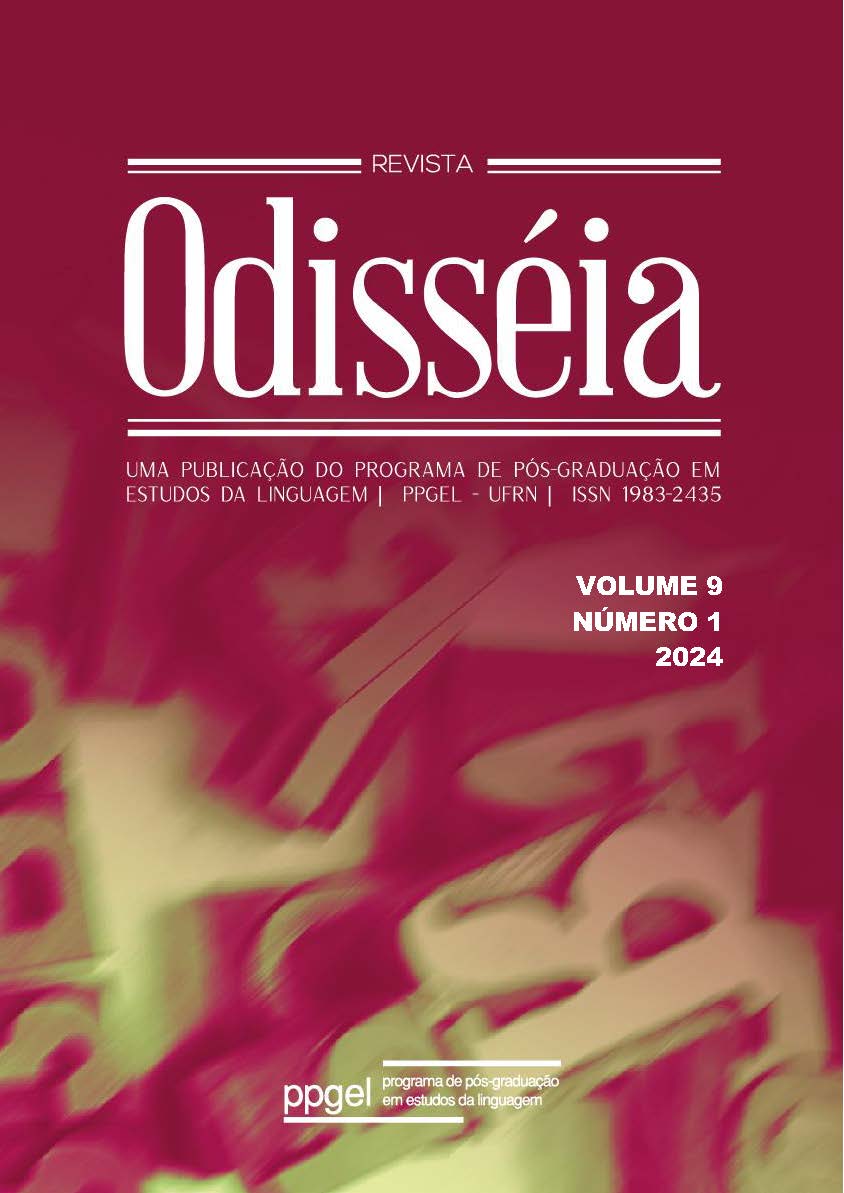Proposta de uma sequência expandida com o conto "The story of the good little boy", de Mark Twain, em aulas de língua inglesa na escola pública
DOI:
https://doi.org/10.21680/1983-2435.2024v9n1ID31620Palavras-chave:
Literatura na sala de aula, Língua Inglesa, Sequência Expandida, Ensino Médio, Escola PúblicaResumo
O presente trabalho tem como objetivo apresentar um modelo de projeto com o conto “The Story of The Good Little Boy” (1875), de Mark Twain, seguindo a proposta da Sequência Expandida de Rildo Cosson (2006), com atividades para outros professores de línguas que também anseiam trabalhar literatura em suas aulas e buscam alternativas possíveis para isso. Neste trabalho, é feita uma reflexão acerca da importância da literatura na sala de aula, bem como do papel do professor no fomento à formação de jovens leitores críticos, além de descrever as atividades propostas no modelo de projeto. Reflete-se, também, sobre os resultados observados durante e após sua realização. Por fim, esta investigação foi desenvolvida no intuito de reforçar a importância de se trabalhar com literatura nas aulas de línguas, reconhecendo o papel fundamental da literatura na vida do estudante.
Downloads
Referências
AZEVEDO, Ricardo. Aspectos instigantes da literatura infantil e juvenil. In OLIVEIRA, Ieda de (Org.) O que é qualidade em literatura infantil e juvenil - Com a palavra o escritor, São Paulo, DCL, 2005.
BARTHES, Roland. AULA. Aula inaugural da cadeira de semiologia literária do Colégio de França, pronunciada dia 7 de janeiro de 1977. Tradução de Leyla Perrone Moisés. SP: Ed. Cultrix, 1978.
BRASIL, Secretaria de Educação Básica. Orientações curriculares para o ensino médio: linguagem, códigos e suas tecnologias. Secretaria de Educação Básica – Brasília: MEC, 2006. v.2
CABRAL, Sara Regina Scotta. Metodologia(s) no processo de ensino e aprendizagem. In: ULBRA (Org.). Metodologia de ensino de literatura. Curitiba: IPBEX, 2009. p. 15-28.
COSSON, Rildo. Letramento literário: teoria e prática. São Paulo: Contexto, 2006.
COSSON, Rildo; SOUZA, Renata Junqueira de. Letramento literário: uma proposta para a sala de aula. UNESP, Agosto 2011. Disponível em: http://www.acervodigital.unesp.br/bitstream/123456789/40143/1/01d16t08.pdf. Acesso em: 22 jun. 2022.
ROUXEL, Annie. Aspectos metodológicos do ensino da literatura. In: Leitura de literatura na escola. Maria Amélia Dalvi, Neide Luzia de Rezende, Rita Jover-Faleiros (Orgs.). São Paulo, SP: Parábola, 2013.
SANTOS, Ana Cristina dos. A literatura no ensino de línguas estrangeiras. Revista Línguas e Ensino, Rio de Janeiro, Ano I, v. 1, n. 1, p. 40-58, 2015.
Downloads
Publicado
Como Citar
Edição
Seção
Licença
Copyright (c) 2024 Revista Odisseia

Este trabalho está licenciado sob uma licença Creative Commons Attribution-NonCommercial-ShareAlike 4.0 International License.

Este trabalho foi licenciado com uma Licença http://creativecommons.org/licenses/by-nc-sa/4.0

















